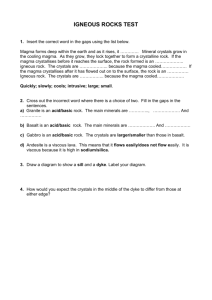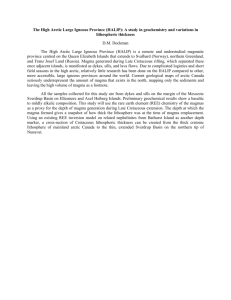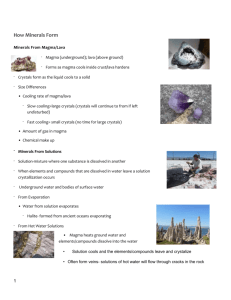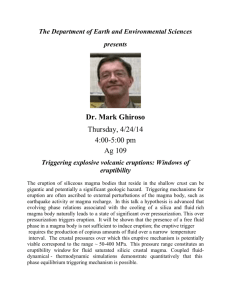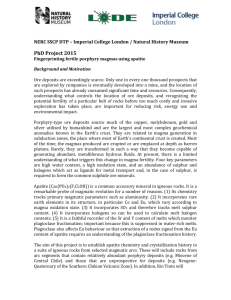Metalliferous Ore Formation
advertisement
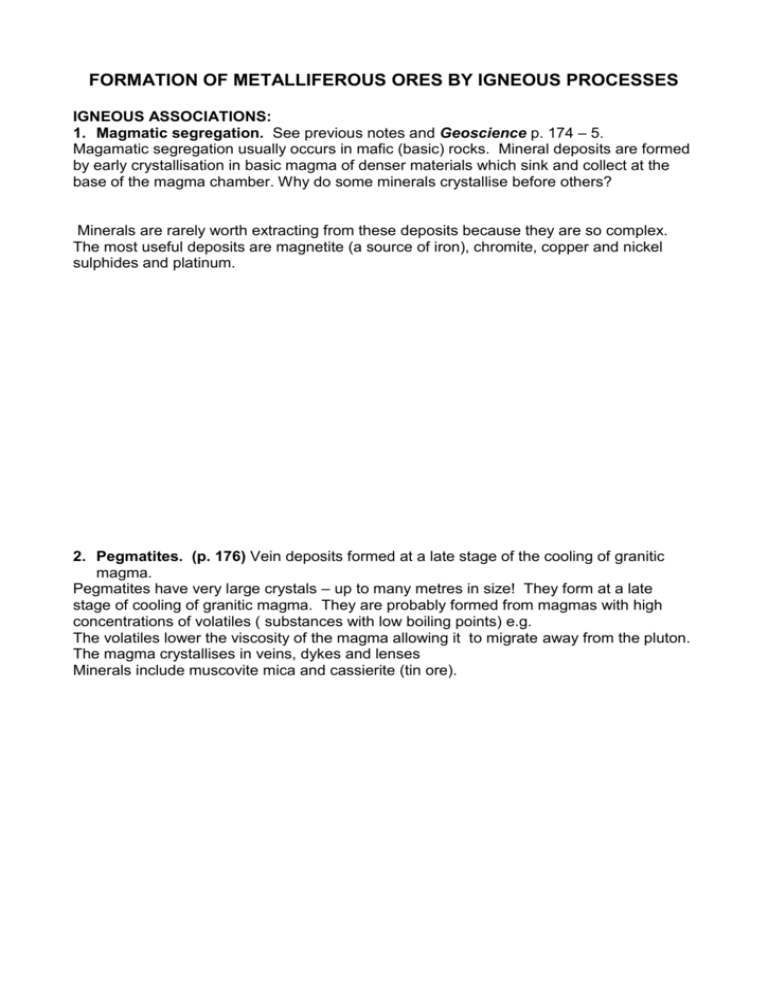
FORMATION OF METALLIFEROUS ORES BY IGNEOUS PROCESSES IGNEOUS ASSOCIATIONS: 1. Magmatic segregation. See previous notes and Geoscience p. 174 – 5. Magamatic segregation usually occurs in mafic (basic) rocks. Mineral deposits are formed by early crystallisation in basic magma of denser materials which sink and collect at the base of the magma chamber. Why do some minerals crystallise before others? Minerals are rarely worth extracting from these deposits because they are so complex. The most useful deposits are magnetite (a source of iron), chromite, copper and nickel sulphides and platinum. 2. Pegmatites. (p. 176) Vein deposits formed at a late stage of the cooling of granitic magma. Pegmatites have very large crystals – up to many metres in size! They form at a late stage of cooling of granitic magma. They are probably formed from magmas with high concentrations of volatiles ( substances with low boiling points) e.g. The volatiles lower the viscosity of the magma allowing it to migrate away from the pluton. The magma crystallises in veins, dykes and lenses Minerals include muscovite mica and cassierite (tin ore). 3. Porphyry ore deposits. Igneous rocks with a porphyritic texture, formed by? Can have associated porphyry ore deposits e.g. copper deposits. These are often formed in island arc plate tectonic environments. Process of formation – magma cools at depth forming large crystals, held in a residual watery melt. If the magma suddenly escapes, the water will boil, producing fractures in the overlying rock. Magma, aqueous solution and steam rush up into the fractures, rapidly cool and crystallise giving a matrix of small crystals around large crystals. Repetition of this process leads to a deposit of sulphide minerals dispersed through the rock like tiny veins. These deposits have only been worked since 1900, yet they contain 50% of the world’s copper and 70% of the world’s molybdenum.The deposits are large. Why do you think they might not be economic to exploit?





